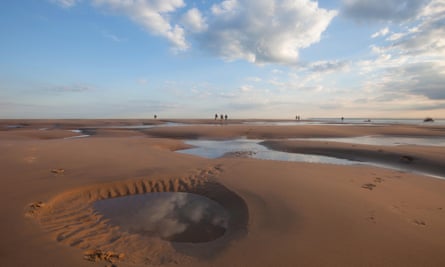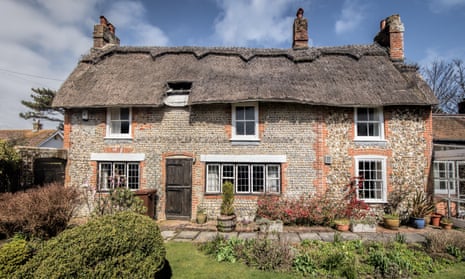A 17th-century thatched cottage where William Blake wrote the words to Jerusalem, the hymn that has become a symbol of hope and patriotic pride, is at risk of being lost because of decay, Historic England has said.
Blake and his wife, Catherine, lived in the brick and flint cottage in Felpham, West Sussex, from 1800 to 1803. His poem, referring to England’s “green and pleasant land” as well as its “dark satanic mills”, was later set to music by Charles Hubert Parry.
The Grade II* listed house was bought by the Blake Cottage Trust for £500,000 in 2015 but needs urgent repairs to the thatch, roof structure and supporting masonry. The trust also hopes to build a new annexe for exhibitions about the poet and artist.
The building was placed into trust for the nation in 2015, and a fundraising appeal has been launched.

Historic England, the government heritage agency, has included the cottage among 130 places added to the 2021 Heritage at Risk register that are threatened by neglect, decay or inappropriate development. The 2021 register also includes 233 sites whose futures have been secured.
Among those removed from the at-risk list is Battersea Power Station, which is due to reopen next year after extensive redevelopment. The site, on the south bank of the Thames, was derelict for decades but now incorporates retail, leisure, housing and office space.
Plumpton Rocks, a Grade II* listed landscape designed in the mid-19th century in North Yorkshire that was twice painted by JMW Turner, has been restored and deemed no longer in danger.
But another garden, Warley Place in Essex, has been added to the list. Created by Ellen Willmott, an influential female horticulturist and an early advocate of “wild gardening”, it became one of the most celebrated gardens in the country. Willmott, who died almost penniless in 1934, having devoted most of her money to the garden, had dozens of plants named after her or Warley Place.

A protected shipwreck lying off the Kent coast is also deemed under threat. The Restoration, a 1055-ton British warship, sank in a storm at Goodwin Sands, near Deal, in 1703. A recent geographical survey showed that the mobile sandbank had almost completely moved, exposing the wooden remains of the hull and several iron cannon. The wreck is now at risk of erosion by wave action and attack from marine organisms.
Historic England said that among the 4,985 places on its at-risk register are 1,459 buildings or structures, 2,001 non-structural archaeological locations, 923 places of worship, 104 parks and gardens, 491 conservation areas, three battlefields and four protected wreck sites.
Duncan Wilson, chief executive of Historic England, said: “Looking after and investing in our historic places can bring communities together, contribute to the country’s economic recovery and help tackle climate change. Our historic places deserve attention, investment and a secure future.”
